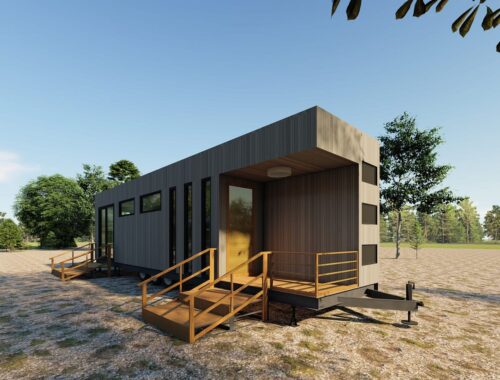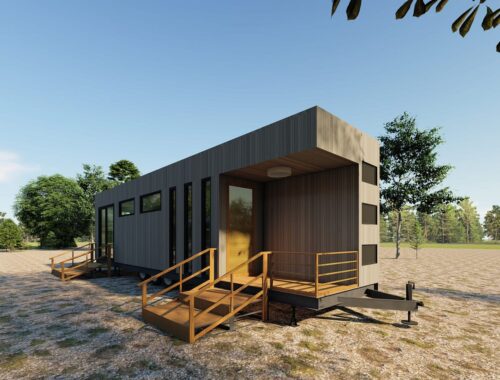Specialized Re-Reinvents the Stumpjumper
In designing a new Stumpjumper for 2018, Specialized faced a challenge: how to keep a 37-year-old model relevant in an ever-improving field
I’d like to be the ultimate expert and say that I rode the original Stumpjumper, but back in 1981, when the bike was launched as the world’s first mass-produced mountain bike, I was likely still pushing training wheels. I have, however, ridden every edition of the Stumpy since 2005—six iterations, to be exact—and across those years I’ve found it to be one of the most consistently fun, innovative, and solid-performing trail bikes on the market. To wit: Both the 2012 and 2016 models won Gear of the Year at our bike tests. So when I heard there would be a new Stumpjumper for 2018, I was interested to see what the bellwether model would bring. Could Specialized improve appreciably on the bike again?
Having ridden the 2018 Stumpjumper for a few weeks now, I’d say the answer to that question is not cut-and-dried.
Don’t get me wrong, the new bike is an awesome all-around trail machine and definitely serves as a milepost for trends in mountain bike design. Compared to the previous iteration, the 2018 model is more aggressive in the suspension (140mm of travel in the frame and a 150mm fork vs. the previous 135mm and 140mm), longer in the cockpit, and slacker by a full degree up front, with a head angle of 66.5 degrees. Specialized also introduced a flip-chip in the suspension, which adjusts the bottom bracket height by 6mm and the head angle by half a degree; standardized metric shocks vs. proprietary parts, making it easy to substitute parts and tweak your ride; and a threaded bottom bracket to combat the durability issues of press-fit models. That’s a lot of changes, especially the move away from proprietary fitments, but none are so much revolutionary as just keeping up with trends.
What’s more interesting are the features Specialized excluded, namely plus tires, which is surprising given the company’s early adoption of the size. The bike comes with either 29- or 27.5-inch wheels, with 2.3- or 2.6-inch tires depending on the model. It’s another sign that more companies are moving toward the middle ground of 2.6, which adds some of the traction of a plus setup without so much weight and rolling resistance. (The 2018 Stumpy still has clearance for three-inch rubber on 27.5 rims.) Also missing is Specialized’s AutoSag shock feature that got riders close to their optimal settings with the press of a button—apparently the new tuning didn’t allow for it.
The 2018 Stumpy still has many Specialized-specific niceties. The SWAT box, which allows storage inside the down tube, is 20 percent bigger than before, with plenty of room for a tube, pump, and jacket. Specialized also improved the internal routing: You can insert a shift cable at the head tube, and it slips all the way through the bike to emerge out the chainstay—a boon for mechanics. There’s a multitool stashed inside the steering tube. The chain guide now swivels to allow work on the chain without removing the guide. And a new molded-on, undulating rubber chainstay protector virtually eliminates chain slap for an eerily silent ride.
As with every performance bike, the Stumpy is—predictably—said to be lighter (between 110g and 550g, depending on the model) and stiffer (20 percent) than the previous version. Those claimed gains come from a radical new frame feature, the Sidearm, a one-sided brace on the nondrive side of the frame that connects the shock mount directly to the seatpost. This asymmetric design is pretty cool-looking and, combined with a more progressive shock tune, gives the bike a stiffer and more aggressive stance.
On the trail, that increased assertiveness is probably the most noticeable change about the Stumpy. It feels slacker and readier to throw down. Thanks to a new, longer 160mm dropper Command Post, getting in position for hairy terrain is a snap. While the previous Stumpjumper had a very plush feel, which aggressive riders complained they punched through when pushing the bike hard, the 2018 model’s new FSR configuration with custom-tuned piggyback shock definitely makes for heartier trail manners. I threw this thing down the rockiest, techiest trails in Santa Fe (the few that we have), and it didn’t so much as hesitate. It is straight steering and super confident on the ragged edge, yet I also climbed through hard tech and tight corners with ease.
All in all, it’s impossible to say that the new Stumpy is better than the old one—it’s just different. It felt more like the 2014 Enduro 29 than its 2016 predecessor. That similarity speaks volumes about broader trends in the mountain bike market. As frames and parts get lighter, bikes continue to become more capable and aggressive, making riding that much easier. The trade-off is that bikes increasingly feel big and monster-truck-like, so you’re sometimes using a sledgehammer for a job that calls for a rubber mallet. Fortunately, in addition to the standard models I’ve been talking about, the new Stumpy is also available in an alloy-only EVO edition that’s bigger and slacker still, as well as two short-travel bikes (again, 29 and 27.5) that are tighter and peppier, with 120mm of rear travel and a 130mm fork. Though I haven’t tried the latter, I’m inclined to think they may be the ultimate all-arounders.
Back in 1981, when there was exactly one mountain bike on the market, it would have been inconceivable that today’s Stumpy would come in five different setups or that this bike would be just one in a crowd of models and brands. Which is to say that while the 2018 Stumpjumper continues to evolve and advance, and it’s a trail bike that I could love and keep, it now sits among a host of other bikes that are just as compelling and fun to ride.
You May Also Like

コンテナハウスの魅力と活用方法
March 14, 2025
Block Breaker: The Ultimate Puzzle Challenge
March 22, 2025